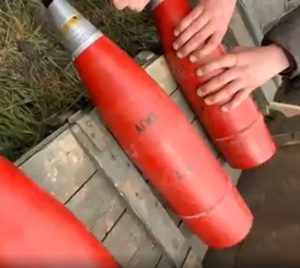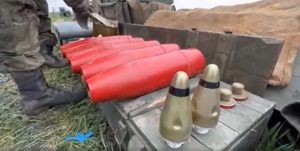Analyst Note:
This artillery projectile is a non-lethal type designed to carry propaganda leaflets. Externally, it strongly resembles other variants carrying lethal payloads, although this particular model has a distinctive all-red colour. The leaflets are expelled from the base of the munition by the action of a small explosive charge, after a set amount of time has elapsed after firing (determined by the fuze). (ARES)










